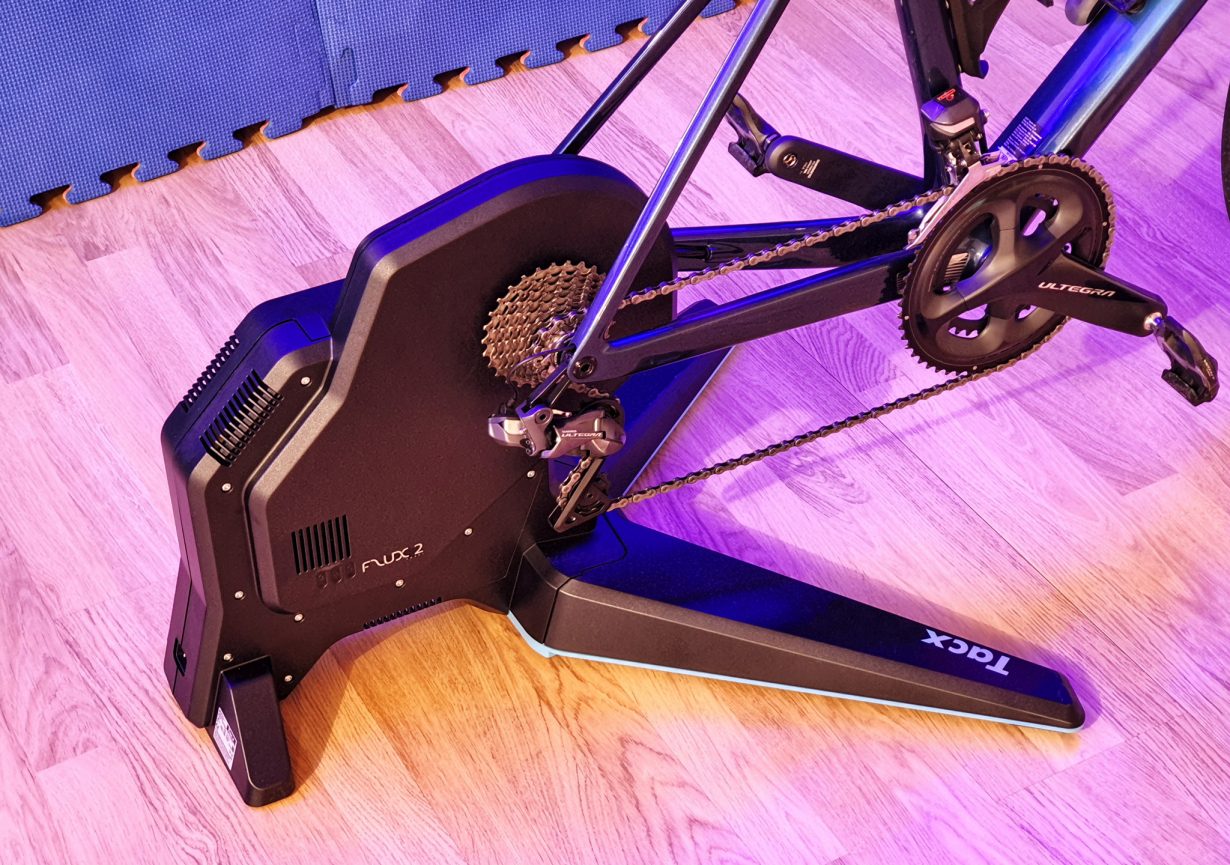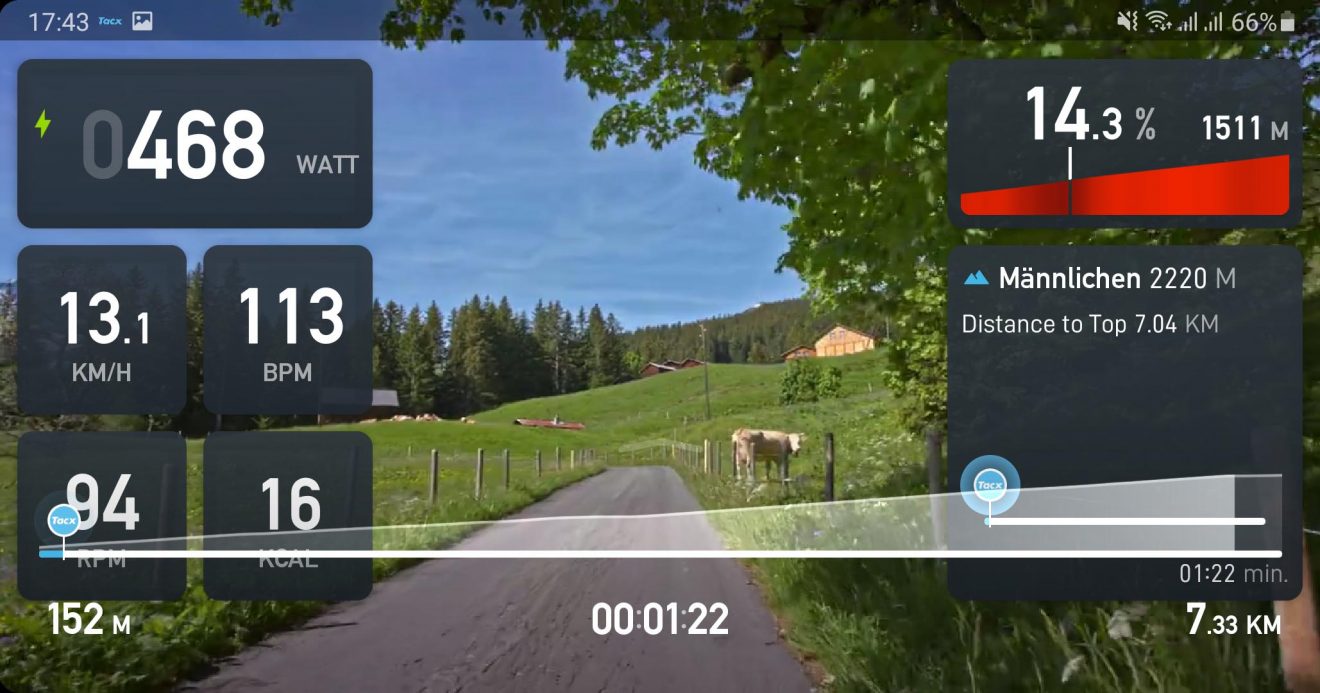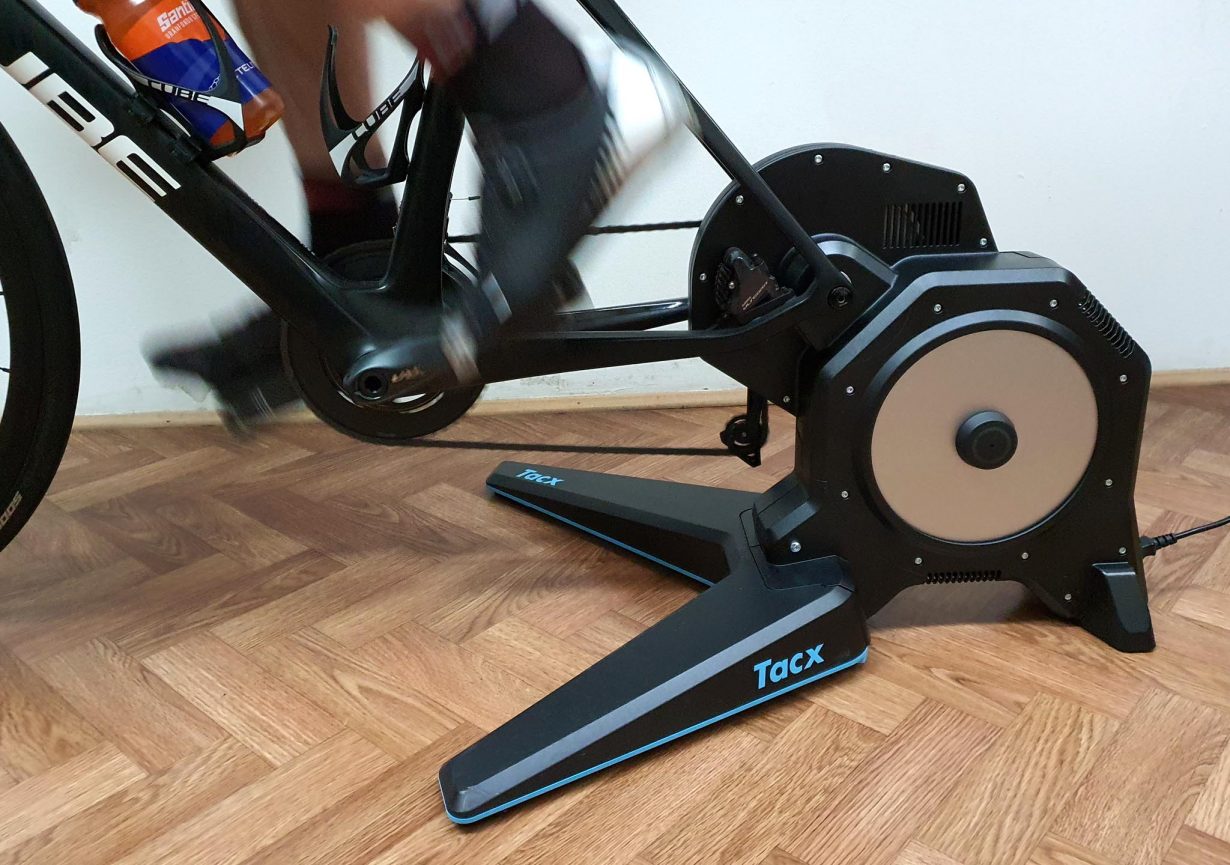In the previous article on the topic of turbo trainers, we explained what a turbo trainer is and why you should have it in your cycling life and we also touched on the topic of smart as well as direct drive turbo trainers. But let’s say it once again – smart trainers enable two-way communication between the turbo trainer and your computer, tablet (if someone still uses that, eg aut.), phone or GPS device, while the term direct drive refers to the type of drive of the turbo trainer and, in this case, the turbo trainer replaces the rear wheel of your bike. If you happen to find these two terms in a single turbo trainer, it means that you can program it for training as you wish, but also experience the atmosphere of a virtual bike ride – whatever floats your boat.
I am not someone who is hesitant about changes and new technologies but I do accept them only when, at least based on my reasoning, they are developed and tested enough for me to replace something that suited me perfectly until then. Such a moment just happened to me in the field of turbo trainers, especially since (at the time of writing this text) I an in the process of winter preparations, so I finally wanted to try out a smart trainer, to see who is a bigger smart pants 🙂 and to find out how a direct drive trainer performs, because I have never been too fond of the concept of classic trainers, in which the rear wheel (or more precisely – the tire) drives a roller (but it must be said that I am generally very satisfied with my existing fluid or hydrodynamic simulator).

Since in my country you can’t just go to a bike equipment store and try out a system like this, I contacted my colleagues from M-Bike Shop to see if they could lend me a turbo trainer of this kind for the purpose of the test, as well as writing mini-series of articles on the topic of turbo trainers. Surprisingly – they gladly responded to my request (although they know I have rigorous standards in terms of equipment quality) and sent me a new Tacx Flux 2 Smart direct drive trainer – for which I’m very grateful!
Also, it is important to point out that, for the purpose of as objective a review as possible, I made the trainer available to all interested cyclists and in the end summarized all the impressions, with an additional note of my personal observations.

Tech talk
Tacx Flux 2 Smart is in the upper segment of Tacx trainers or specifically the second from the top (by the way, Garmin recently acquired Tacx). It is an electromagnetic turbo trainer with a 7.6 kg flywheel, a classic HG freehub (it supports Shimano and SRAM cassettes from 8 to 11 speeds, while for other variants you need to buy the appropriate freehub) and power transmission via a belt. The turbo trainer measures the power you produce (with a precision deviation rate lower than 2.5%), speed and cadence, supports up to 2000 W of power and can simulate inclines of up to 16%. So, it’s good enough for professional riders and probably for recreational ones as well :). Connection to other devices is done via Bluetooth and ANT + standards, so you can practically connect it to anything and everything. Also, I measured the height from the floor to the center of the wheel axles on my road bike with 28 mm tires and concluded that the bike sits almost perfectly horizontal, so the trainer is used without a front wheel lift block and it is easier to be seated on it than on a bike that is elevated, when using a classic trainer.

What’s in the box?
Like the Russian babushka doll, the transport cardboard box weighing 24 kg contains another box and that other box contains a turbo trainer, practically in two parts – the main body with flywheel and a foot in the shape of the letter V. Also, there are screws that connect the two parts, as well as a matching Allen key. I have to admit that I approached the testing with certain prejudices but that my first impression after taking the turbo trainer out of the box was that it was a quality and advanced device (as it should be, given the price, ed.). It is very convenient that you also get different attachments for mounting a bike, so you can use a bike with the included classic 5 mm quick release skewer, as well as 12 mm thru axle, in lengths of 142 and 148 mm. You can do the conversion in just a couple of minutes and for this you will need a 5 mm Allen key and a 17 mm wrench (not included). Also, you get a spacer for 10-speed cassettes, various paperwork, as well as codes for a free month of Tacx Premium software, as well as Zwift. I didn’t mention that the advanced use of the turbo trainer also requires a power source (although you can ride it without power, in “dumb” mode), so you also get a power cable in the package (which is otherwise the same as for computers).

3, 2, 1… Go!
 This heading describes the installation and preparation for use process quite well. Basically, my only problem was getting the turbo trainer out of the box and in the next few minutes I mounted the stand, replaced the adapters, put on the cassette, put the bike on the trainer and plugged the trainer into a power supply. Then, again in just a few minutes’ time, I installed the Tacx Utility app on my phone, connected it via Bluetooth, calibrated the trainer, checked that all the readings were functioning properly and created an account on the Tacx Training App (you get a 10-day trial period for Premium access, in addition to the aforementioned one month subscription that’s included – and from them on this satisfaction will cost you 9.99 USD upwards, per month). Then, in order to get a better experience, I installed the application on a laptop, connected to the trainer via Bluetooth and to the LCD TV via an HDMI cable. All in all, just 15-20 min after the first contact with the trainer, I was already riding around Girona in Spain.
This heading describes the installation and preparation for use process quite well. Basically, my only problem was getting the turbo trainer out of the box and in the next few minutes I mounted the stand, replaced the adapters, put on the cassette, put the bike on the trainer and plugged the trainer into a power supply. Then, again in just a few minutes’ time, I installed the Tacx Utility app on my phone, connected it via Bluetooth, calibrated the trainer, checked that all the readings were functioning properly and created an account on the Tacx Training App (you get a 10-day trial period for Premium access, in addition to the aforementioned one month subscription that’s included – and from them on this satisfaction will cost you 9.99 USD upwards, per month). Then, in order to get a better experience, I installed the application on a laptop, connected to the trainer via Bluetooth and to the LCD TV via an HDMI cable. All in all, just 15-20 min after the first contact with the trainer, I was already riding around Girona in Spain.

Smart pants
Like I said, you can use the Tacx Training App on your phone, tablet or computer and it acts as the brain of the smart system. The free version allows you to create workouts, view current data, as well as ride statistics, which you can export or set to be automatically shared to your Strava account. The premium version adds the possibility of simulated riding in many destinations all around the world, with video clips and the appropriate elevation map – e.g. the control of the load of the trainer. In addition, you can import your own GPS route and ride on a 3D view of the route, with an automatic terrain profile simulation. You can also choose one of the many training plans. There is also a more expensive HD version of the app, which brings you videos in higher resolution. Riding while watching these video clips is very interesting and gets rid of boredom related to turbo trainer riding, especially with the interactivity that you get by the app controlling the load of the trainer. Also, there are parameters that show your performance (including heart rate, if you have an HRM strap) and riders can find the current power data really interesting (probably previously unknown to most), which is the latest cry of fashion and technology in the world of cycling.

What’s the status of the relationship?
 I’m not sure if all smart devices can communicate with each other but it would be practical if the trainer could notify the water boiler to turn on when you start the ride and to let know the washing machine that it can expect you to show up with a sweaty jersey and towel after the ride 🙂 . Joke aside, in addition to the Tacx app, you can control the trainer through a handful of other applications (such as the aforementioned and highly popular Zwift) and during the period of testing the turbo trained, I tried out all of the most popular app, so I will also write an article about it. In addition, you can control the trainer perfectly well with your GPS device, either based on a programmed training or a GPS route (at least in the case of the device I use) and it also receives power, speed and cadence data from the trainer. So, even if you don’t have a desktop nor a laptop computer and you use a Nokia 3310 phone – you’ll still have an opportunity to ride the turbo trainer in smart mode.
I’m not sure if all smart devices can communicate with each other but it would be practical if the trainer could notify the water boiler to turn on when you start the ride and to let know the washing machine that it can expect you to show up with a sweaty jersey and towel after the ride 🙂 . Joke aside, in addition to the Tacx app, you can control the trainer through a handful of other applications (such as the aforementioned and highly popular Zwift) and during the period of testing the turbo trained, I tried out all of the most popular app, so I will also write an article about it. In addition, you can control the trainer perfectly well with your GPS device, either based on a programmed training or a GPS route (at least in the case of the device I use) and it also receives power, speed and cadence data from the trainer. So, even if you don’t have a desktop nor a laptop computer and you use a Nokia 3310 phone – you’ll still have an opportunity to ride the turbo trainer in smart mode.
Guestbook
Like I said, I’ve made the turbo trainer available to cyclists who are currently using some other type of smart trainer or an ordinary trainer or they are experiencing a turbo trainer for the first time even – and of course me personally. In short – the impressions are great! The trainer is very stable, even when riding out of the saddle, direct drive provides a superb connection between the pedals and the trainer while the electromagnets react very quickly and provide smooth load adjustment, unlike cheaper smart trainers, where the response is slow and noticeably notchy, which greatly spoils the riding feel. It is important to mention that the trainer can function in the so-called ERG mode, which means you can adjust the desired power output in Watts that you want to maintain (for instance 250 W) and the trainer will do its best to keep you in that zone, regardless of you shifting gears and changing the cadence. Of course, it is up to you to make the necessary effort in order to reach the desired goal.

Nikica’s thoughts
Nothing’s perfect, especially me and my requirements 🙂 but in the long run – it bothers me a little bit that the trainer does not have an on/off switch, because I don’t like having my devices sit in stand by mode and sometimes it may take a reset to reinitialise Bluetooth connection. Of course, it’s possible to simply unplug the cable but I don’t like that idea in the long run. My bike’s Syncros rear wheel axle lever gently scrapes the body of the trainer during the last revolution of thread, but it is possible to tighten the bike firmly. And finally, due to the weight and dimensions, the trainer is inconvenient to maneuver and carry for my weak back, so it would be practical to have an integrated handle.
On the other hand, the saying I often repeat – “you don’t know you need something until you try it” – proved to be true again. Software and hardware manufacturers have done a good job of making turbo trainers more mainstream, that is, brought them closer and made them more interesting for recreational riders, who did not really consider it as an important part of cycling equipment previously. Of course, global circumstances have also led people to turn to indoor cycling. All this aside, me, e.g. someone who is not unfamiliar with riding a classic trainer, found the interactivity, as well as information about the produced power rather interesting, so now I’ve received the desired answer to the question of what it would be like to rider a direct drive smart trainer… and now I’m not sure how or even if I will part with it…
As for you, read the previous article on turbo trainers and then decide whether you need a trainer or, better said, which model could fit into your budget.
In the next article on this topic, I bring you a test of the 10 most popular applications for smart trainers.
